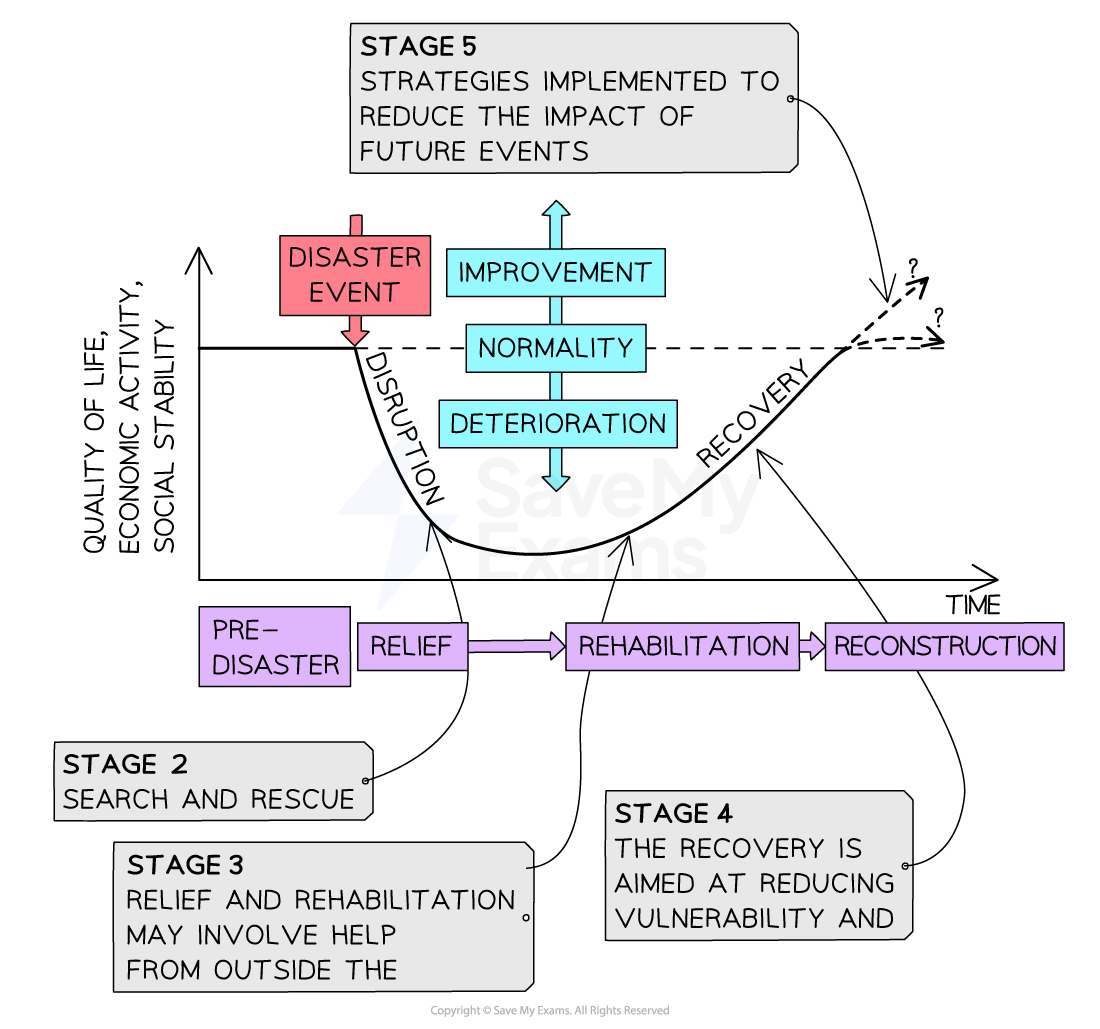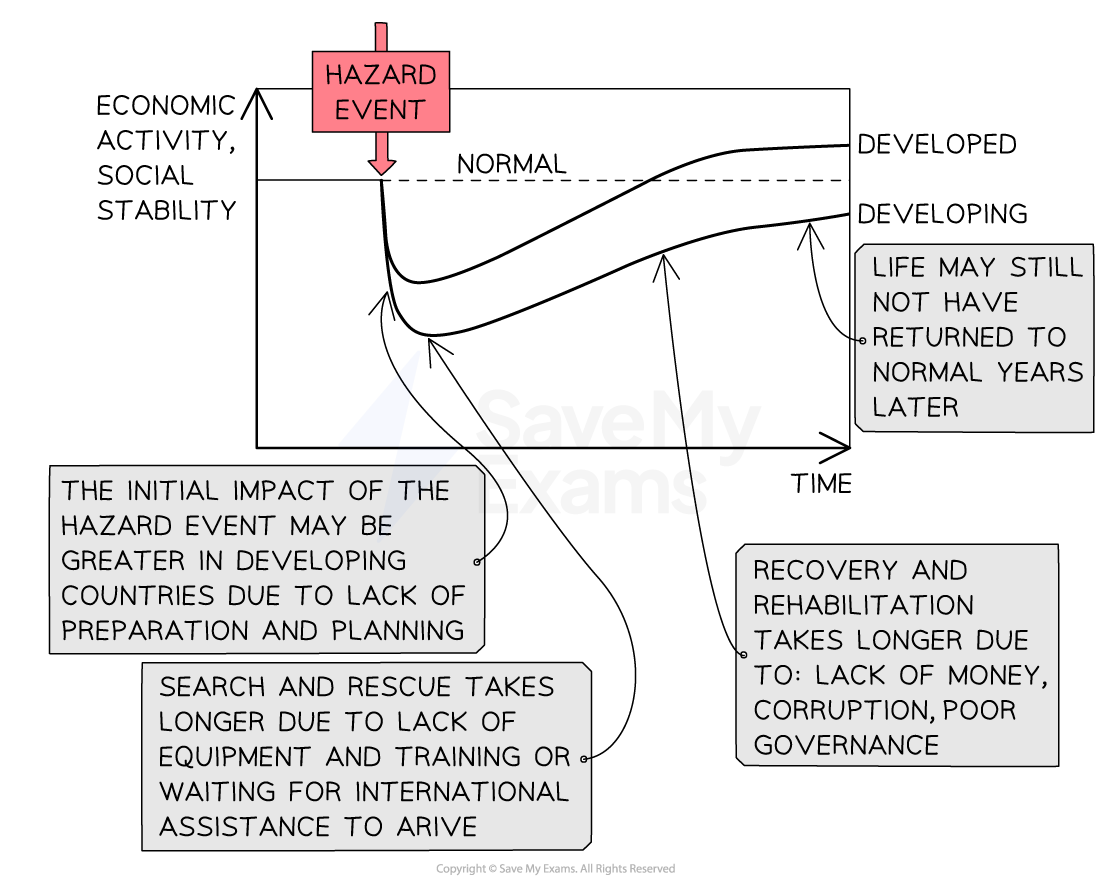Prediction & Forecasting
- The accuracy of prediction and forecasting of tectonic hazards depends on the type and location of the hazard
- Scientists use prediction and forecasting to help with planning and preparation for hazards
- Prediction is knowing when (temporal scale) and where (spatial scale) a hazard will occur
- Forecasting gives a percentage chance of a hazard occurring over a set period of time
Earthquakes
- It is not possible to predict earthquakes
- An understanding of tectonic activity can help scientists identify areas most at risk
- Over 90% of earthquakes occur on or near plate boundaries
- Scientists are constantly researching to improve forecasting - research has focussed on:
- Seismic gap theory - to highlight areas at high risk as they have not experienced an earthquake for some time
- Radon emissions
- Animal behaviour
- No method has yet proved to be reliable
The United States Geological Survey have made forecasts about the chances of an earthquake in the Los Angeles area that 'within the next 30 years there is a 60% probability of a 6.7 magnitude earthquake'
Volcanic eruptions
- There are signs warning of an eruption before most volcanic eruptions
- Volcanologists (scientists who studied volcanoes) monitor changes using GPS, tilt meters, satellites, seismometers and gas detection
- Signs of an eruption include:
- Magma rising which can be detected by heat sensors and satellites
- Changes in surface level as rising magma causes bulges
- Increased emissions of sulphur dioxide and other gases
- Increased seismic activity caused by magma movement detected by seismometers

Methods of monitoring volcanoes
- Improved prediction of volcanic eruptions has led to a decrease in the death toll
Tsunami
- For earthquake-induced tsunami scientists are unable to predict the earthquake itself
- When the earthquake happens this will be detected by the global network of seismometers, these will locate the epicentre of the earthquake
- Ocean monitoring technology can then be used to detect tsunami
- Warnings can then be issued to coastal areas which may be affected

Tsunami warning system
- Improvements and advances in technology are constantly changing prediction and forecasting
- Systems are regularly updated and reviewed particularly after a hazard event
- In the Asian 2004 tsunami errors in the system increased the number of deaths
- In Indonesia the sensor system had been struck by lightning so did not work
- In India the warning went to the wrong official
- The sensors in the region were limited
- In the 2011 Japanese tsunami the height of the tsunami was underestimated so the warnings were not accurate




